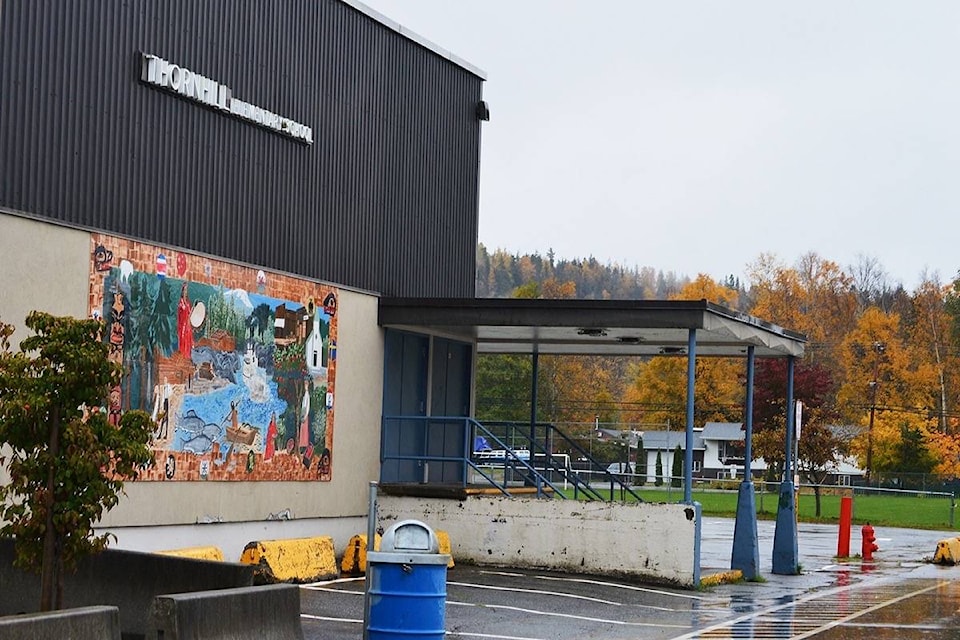The Coast Mountains School District plans to demolish and replace several schools in the district over the next decade, including tearing down Thornhill Primary School and Thornhill Elementary School to replace them with one new facility.
The move won’t happen without public consultation and major capital funding from the Ministry of Education, but the school district is pursuing the green light from the ministry to proceed with consultation as soon as possible.
The district plans to replace schools because of the age of the buildings and the extra space in many of the schools, which increases maintenance and utility bills.
The school replacement projects are part of a Long Range Facilities Plan, 2017 to 2027, which was made by Cascade Facilities Management Consultants in January 2017 and was approved by the school board at their September meeting.
Trustees didn’t discuss the plan at the meeting, but Kitimat trustee Margaret Warcup did make a statement about the need for timely public consultations and innovative use of space before all trustees voted in favour of the plan.
Replacing and consolidating the two Thornhill schools is an estimated $30.2-million project, the second priority in a long list of multi-million dollar facility upgrades.
First on the list is replacing Mount Elizabeth Middle-Secondary School in Kitimat for an estimated $65.6 million, with plans to close Kitimat City High down the road and amalgamate those two schools.
Other schools up for replacement are Kildala Elementary and Nechako Elementary, both in Kitimat, and New Hazelton Elementary School.
Two elementary schools in Terrace — Uplands Elementary and Cassie Hall Elementary — are also on the project list for major facility upgrades in the upcoming years.
The central reason is the age and condition of facilities.
Twelve of the district’s 18 schools are more than 50 years old, with six of those built in the 1950s, including Uplands, Cassie Hall, Nechako, Kildala, Mount Elizabeth and Kitimat City High. The seven built in the 1960s include Suwilaawks, Thornhill Elementary and Thornhill Primary, Caledonia Secondary, Parkside Secondary, Majagaleehi Gali Aks Elementary, and Bear Valley.
Based on aging and depreciated value, the facilities plan classifies every school except two in the district to be in “poor” or “very poor” condition. That’s because the floors, roofing, wall exteriors, heating and electrical systems are all considered past their life expectancy and in need of replacement, explained director of facilities Travis Elwood, who added that the buildings have been well maintained and are in good, workable condition.
They’re safe and functional, said Elwood.
“In general, there’s a long list of things that should be renewed,” said Elwood, but “you can make an old thing function for a lot longer than its life expectancy.”
At the same time, aging schools will need to start being replaced, and school district secretary-treasurer Alanna Cameron noted that the old buildings do cost extra for maintenance and utility fees.
The second reason to replace schools is space utilization.
Many schools have extra capacity because they were built for much larger student populations. That’s especially dramatic for Mount Elizabeth in Kitimat, which has capacity for 1175 students but enrols between 420 and 520 students.
Thornhill Primary and Thornhill Elementary also have extra capacity, with space for roughly 300 students in each school but enrolment between 150 and 190.
Finally, the long range facilities plan also mentions hopes to reconfigure schools in Hazelton and the outlying region to have the same middle school structure as Terrace and Kitimat, rather than just elementary and high school.
Ultimately, the plan is a big picture for the long term, and though it includes an ambitious timeline to finish seven multi-million projects by 2025, Cameron explains the timeline is more to demonstrate readiness.
“By putting the fact that we are ready to start [public] consultation in 2018, it says to the ministry and the public, if the ministry was to approve our capital plan, we are ready to go,” she said.
“Some districts may want a placeholder, like ‘eventually we are going to want to replace this, not right now, but sometime in the next five years’. But what we are saying is ‘today, now, we are ready to go,’ said Cameron.
Everything is contingent on provincial funding, and the Ministry of Education is currently reviewing capital funding requests. With a three-year budget of $1.7 billion for capital projects, which includes $552 million for seismic upgrades, the province will weigh the needs of 60 school districts in B.C.
Many districts have faced spacing challenges with the new class size regulations and nearly all districts have aging buildings similar to the north.
Capital plans were submitted in June and funding announcements typically come in the spring.
But Elwood says the province will first indicate interest in a project and there will be public consultation before it’s approved.
If approved, it would take at least another year before plans go ahead.
